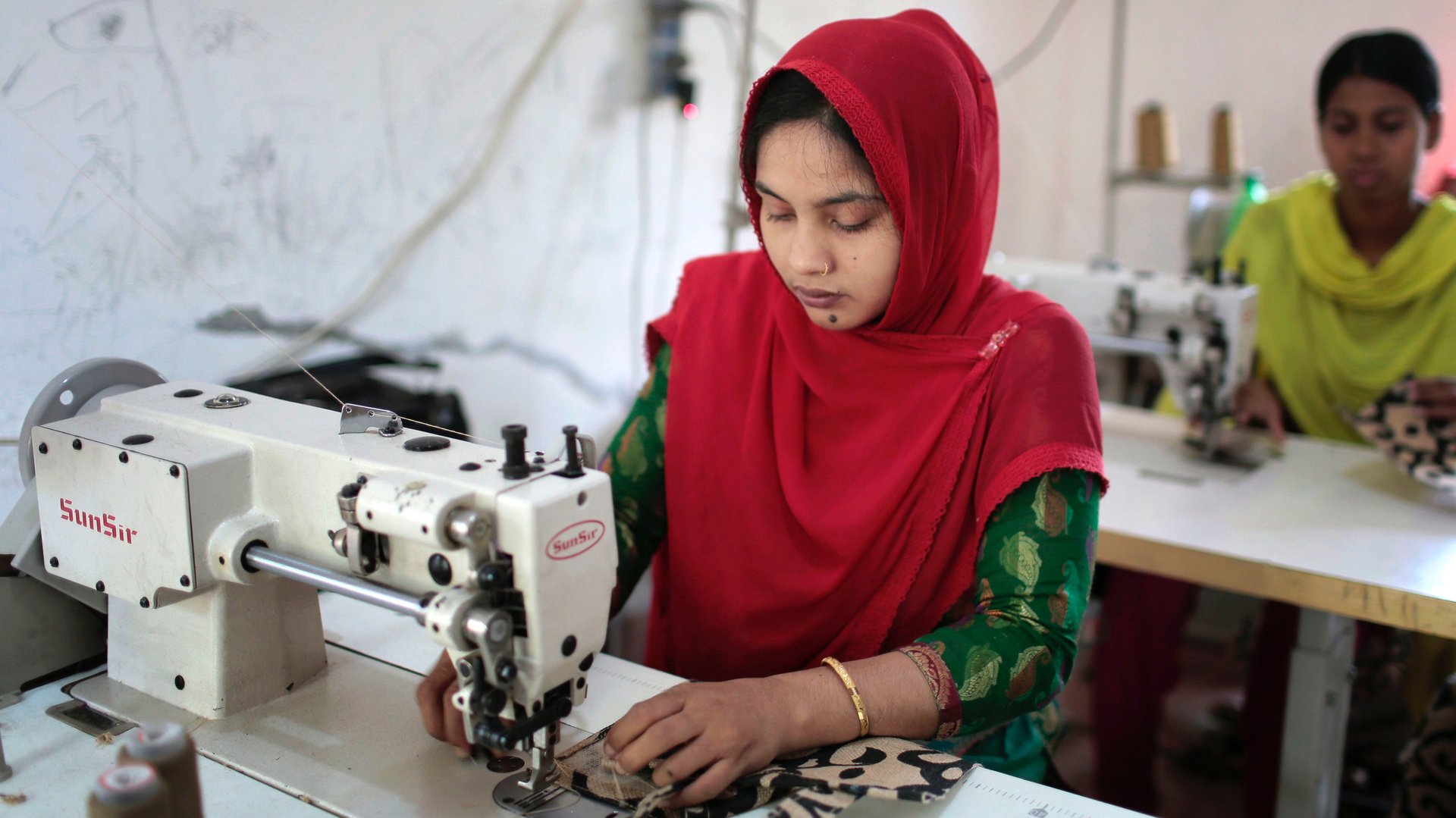We’re getting closer to clothing made entirely by robots
When it comes to stitching together complex garments, dexterous human hands are still far superior to rigid robot arms.


When it comes to stitching together complex garments, dexterous human hands are still far superior to rigid robot arms.
Much of the garment production process is already automated, from picking cotton to spinning yarn to cutting clothes. Some specialist machines can even sew buttons or pockets. However, no commercial robot had been able to piece together all the different materials to create an entire item of clothing, like a pair of jeans or a t-shirt.
But last month, Jonathan Zornow, founder and sole employee of Seattle-based startup Sewbo, claimed a breakthrough: He says he overcame a common hurdle to clothing automation—the challenge of working with weak, flexible fabrics—and successfully used an industrial robot to sew together a t-shirt.
The 30-year-old former web developer took inspiration from the 3D printing industry, where water-soluble thermoplastics are melted and molded. He stiffened the t-shirt fabric by treating it with such a material, “making it easy for conventional robots to build clothes as if they were made from sheet metal,” according to a press release. Rinsing the article of clothing in hot water restores the fabric to normal.
During prototyping, Zornow has been using the collaborative Universal Robot, an off-the-shelf model priced at almost $35,000 that’s designed to safely work alongside humans or assist them. But any robot can be programmed to carry out the function, either by showing the robot what to do so it can imitate the process, or by creating specialized software. In the long run, the robot’s faster speeds and better accuracy would, in theory, make up for the set-up costs. Zornow claims that his technique could eventually be used for customizing and altering clothing on the spot to suit a customer’s preferences and dimensions.
In an industrial environment, a manufacturer could automate each stage: cutting the fabric, stiffening it, shaping it with high-frequency acoustic vibrations, stitching it, and then rinsing it back to normal.
With fast-fashion gaining traction, reprogrammable robots could churn out a variety of products, which would “shorten supply chains and lessen the long lead times that hamper the fashion industries,” Zornow told Quartz. Adidas recently flaunted a new pair of shoes that were designed and created almost fully in one of its first robot-staffed factories, called Speedfactory, in Germany. Foxconn, the contract manufacturer, reduced its 110,000-strong workforce to 50,000 after introducing robots in May.
In 2012, the Pentagon awarded a $1.2 million grant to Softwear Automation, a Georgia Tech spinoff, to create computer-controlled sewing machines that could compete with cheap labor in China. This year, Softwear Automation used a custom-built robot to sew together two pattern pieces of a pair of blue jeans—a naturally stiffer fabric—but it has yet to automate the complete production of the denim trousers.
This type of technology will have huge implications for millions of people in Asia and southeast Asia, especially women. Nearly 90% of garment and footwear workers in Cambodia and Vietnam are at risk of losing their jobs to automated assembly lines, according to a July 2016 report from the International Labour Organisation.
“I do worry about what this could mean for people in the low wage environment. It’s something we’ve worried about whenever there’s been any new technology at any point in history,” Zornow told Quartz, adding that almost all technology innovations have ended up being “unambiguously good for humans.” He hopes history will continue to repeat itself.